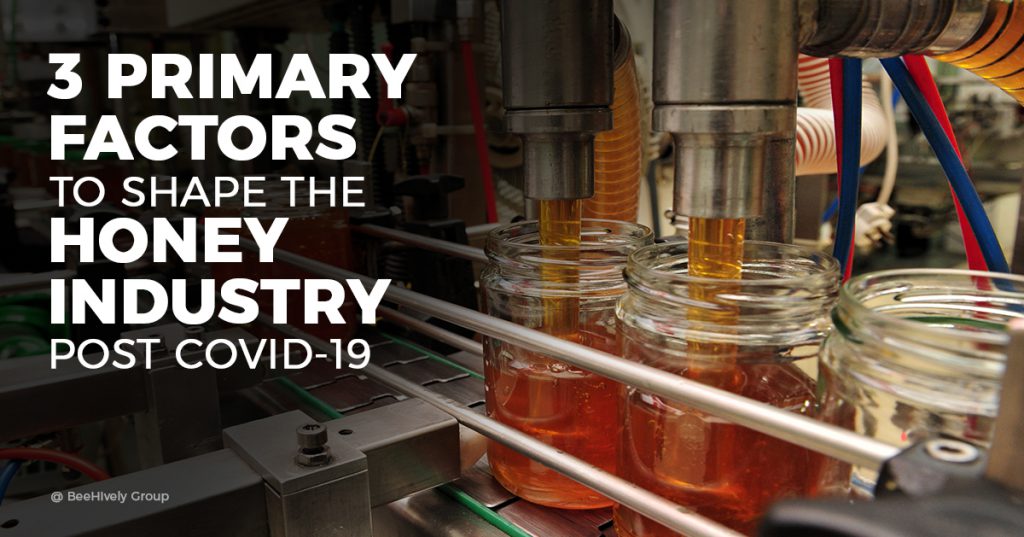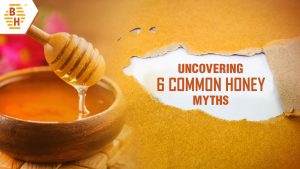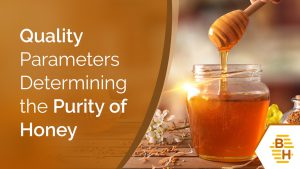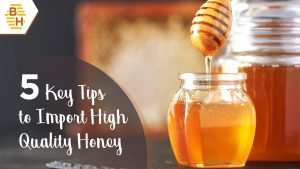With an aim to curb the spread of COVID-19, countries across the globe had ordered lockdowns, thus everyone has been confined to their homes since then. COVID-19 lockdowns have had an impact across industries, and honey industry which is primarily run by beekeepers is no exception.
Beekeepers deliver support activities for crop and animal production through pollination services provided by bees. Pollination is essential to sustain the food supply. Thus, beekeeping businesses are considered essential. Alongside, one of the primary food substances that bees produce is honey. It is produced from the sugary secretions of plants (floral nectar) or other insects through regurgitation, enzymatic activity, and water evaporation. Honey is stored in wax structures called honeycombs. The practice of beekeeping involves collection of honey from wild bee colonies, or from hives of domesticated bees.
Scenario of Beekeeping during COVID-19 Lockdown
In the current scenario, bee farmers are finding it hard to move their bee boxes from one place to another. It can be said that their bees cannot be fed as usual on seasonal flowers, neither they have been able to pollinate this summer.
Also, during summers, bee boxes are sent to different states so that bees can feed on seasonal flowers of mango and litchi trees. Bees play a major role in helping pollinate the mango and litchi trees, thereby increasing the production of these two cash crops, and a variety of other plants. As most of the bee breeders are completely dependent upon bee breeding for their livelihood, the lockdowns have resulted in both bees and beekeepers starving to death.
However, the impact of COVID-19 on honey market is not completely down in the dumps. Due to the COVID-19 scare, switching to organic food and healthy substitutes that can improve immunity of the masses is a priority. According to a prediction in a report by FactMR, honey market is set to witnessa growth at a CAGR of 5.1% between 2019 and 2029. Thus, honey will continue to witness augmented demand for healthy food applications across the globe.
3 Key Factors that will Shape the Honey Market in the Aftermath of COVID-19
Honeybee products are likely to witness worthwhile opportunities across the globe with the growing number of nutritive food applications and healthy food processing industries. COVID-19 has only led to an increase in demand of nutritive food applications. Following are the 3 primary factors that will shape the future of the honey market post COVID-19.
1. Healthcare and Medicinal Use of Honey
COVID-19 has increased the importance of eating healthy and valuing the immunity system of the body. This has only surged the acknowledgment of organic and natural food as healthy substitutes across the world. Rising awareness about different types of honey and its health benefits are causing an increase in demand for honey. Nutritious and medicinal characteristics of honey help in relieving stress, and recovering from various health-issues like sleep disturbances, sore throat, cold, etc.
2. Awareness of Sustainable Beekeeping Practices
- Using Top BarHives
Sustainable beekeeping uses structures like top bar hives, which let the bees create their own hives. Beekeeping with this type of open-ended framework allows the bees to build the comb in the manner and shape that comes naturally to them.
- Keeping the Comb Organic
Modern agriculture has introduced chemicals that help limit diseases and infections in bees. However, they stir up other serious concerns pollution and impact the population of the bees. Sustainable beekeeping lets the honeybees work as nature intended. Thus, it allows bees to go back to the natural processes, encouraging the success that was experienced before overly invasive methods.
- Letting the Bees Take Control
Sustainable beekeeping gives more control to the bees. This means less invasion from beekeepers, such as not eliminating bees they believe to be unproductive. By focusing on sustainability of bees, we support many other plants and food products as most of the crops rely on the honeybees to survive.
3. Extraction of Futuristic Flavors from Honey
Manufacturers are making efforts to improve the efficiency of the production processes of honey due to the increasing awareness of its health benefits. Global leaders are readily investing in R&D activities to develop advanced technologies to maintain beehives, produce honey with even better quality and purity as well as extract flavors that can substitute harmful sweeteners. This has resulted in numerous lucrative opportunities in the market and invited new entrants globally. Market leaders are developing a varied range of research-driven honey and honey products to maintain a competitive edge in different regions.
Creating an Ecosystem for Honey Industry to Thrive
Agriculture largely depends on pollination carried out by bees, which play a substantial role in the lifecycle of a lot of plants. In a pandemic like COVID-19, a healthy ecosystem that can deliver organic products like honey in abundance with its very many health benefits can be extremely beneficial. BeeHively is continuously working to conserve bees and directly liaising with beekeepers to promote sustainable beekeeping practices. It is also working extensively toincrease honey production and supplygood-quality bulk honey.




